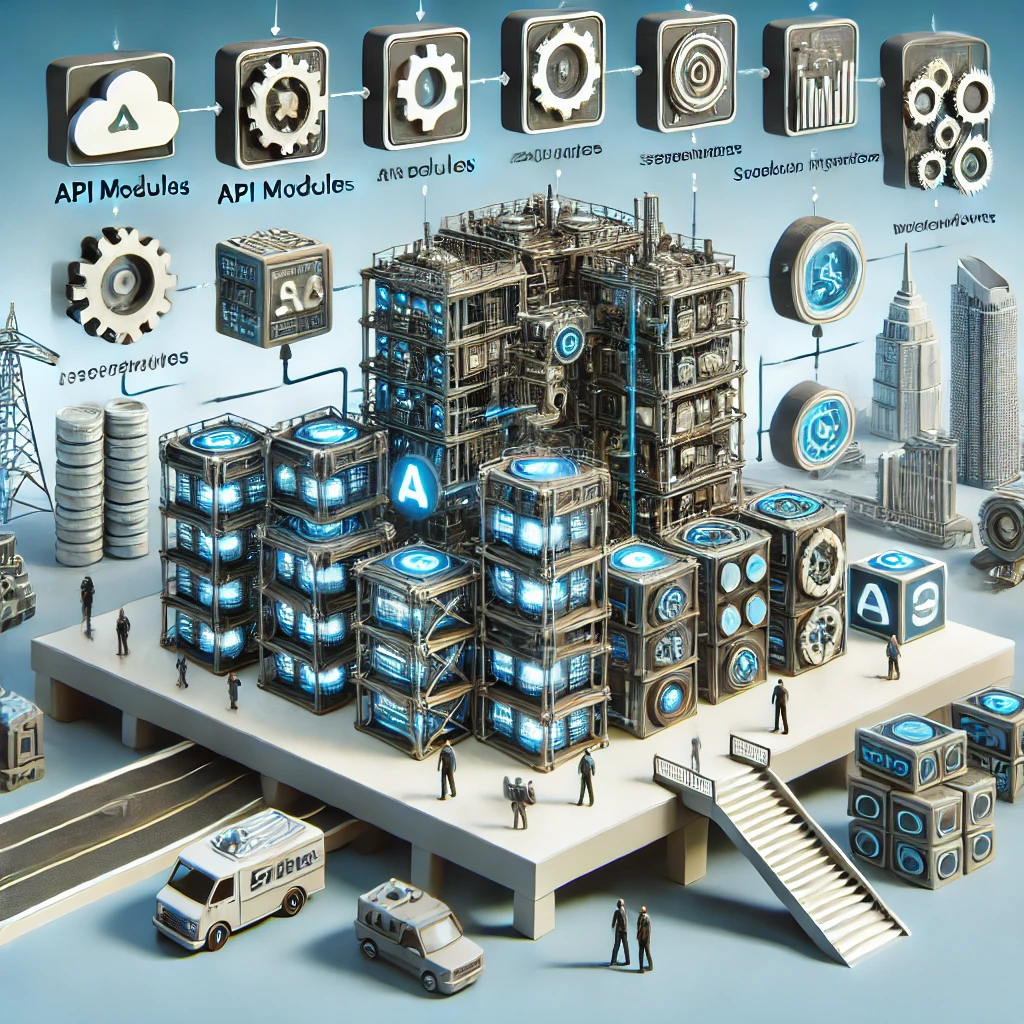Building Modular API Architectures with Syncloop's Features

This blog explores how Syncloop’s tools and features simplify the creation of modular API architectures, empowering developers to build systems that are flexible, robust, and future-ready.
What Are Modular API Architectures?
Modular API architectures are built on the principle of decomposition, where large, monolithic systems are divided into smaller, reusable, and independent API modules. Key benefits include:
- Reusability: Modules can be reused across different applications or projects.
- Scalability: Modules can scale independently based on demand.
- Flexibility: Modules are easier to update, replace, or extend.
- Maintainability: Simplifies debugging and development with isolated components.
- Faster Development: Enables parallel development and integration of modules.
Challenges in Building Modular API Architectures
- Integration Complexity: Ensuring seamless communication between independent modules.
- Data Consistency: Managing shared data across multiple modules.
- Performance Optimization: Minimizing latency and resource overhead.
- Security: Implementing consistent and robust security across modules.
- Monitoring and Management: Tracking the health and performance of distributed modules.
Syncloop Features for Modular API Architectures
1. API Orchestration
Syncloop enables the orchestration of workflows across multiple API modules, simplifying their integration.
- Features:
- Conditional logic for inter-module workflows.
- Event-driven triggers for dynamic module coordination.
- Benefits:
- Simplifies communication between modules.
- Reduces manual effort in managing dependencies.
- Use Case: Orchestrating user authentication, payment processing, and order fulfillment in an e-commerce system.
2. Microservice Integration
Syncloop supports the integration of microservices into a cohesive modular architecture.
- Features:
- Pre-built connectors for seamless service communication.
- Support for diverse protocols, including REST, GraphQL, and gRPC.
- Benefits:
- Ensures compatibility across microservices.
- Streamlines development with minimal setup.
- Use Case: Connecting inventory management, shipping, and customer service APIs in a logistics platform.
3. Dynamic Scaling
Syncloop’s dynamic scaling ensures each module can handle workload fluctuations independently.
- Features:
- Auto-scaling for high-demand modules.
- Load balancing to optimize resource utilization.
- Benefits:
- Maintains performance under varying traffic conditions.
- Reduces costs by scaling resources based on actual needs.
- Use Case: Scaling the product catalog API during seasonal sales.
4. Granular Access Controls
Syncloop enforces security at the module level with role-based access control (RBAC).
- Features:
- Module-specific permissions and access policies.
- End-to-end encryption for secure communication.
- Benefits:
- Enhances security by isolating access to specific modules.
- Simplifies compliance with data protection standards.
- Use Case: Restricting access to billing APIs to authorized financial teams only.
5. Real-Time Monitoring and Alerts
Syncloop provides monitoring tools to track the health and performance of individual modules.
- Features:
- Dashboards for monitoring latency, errors, and throughput.
- Alerts for anomalies or failures in specific modules.
- Benefits:
- Enables proactive troubleshooting and optimization.
- Improves reliability with actionable insights.
- Use Case: Monitoring API response times for a payment processing module.
6. Data Transformation and Enrichment
Syncloop facilitates seamless data exchange between modules with built-in transformation tools.
- Features:
- Schema mapping for consistent data formats.
- Real-time data enrichment for complex workflows.
- Benefits:
- Reduces manual data manipulation efforts.
- Ensures data consistency across modules.
- Use Case: Transforming data from user profile APIs into a format compatible with analytics modules.
7. Version Control
Syncloop supports API versioning, allowing developers to update or deprecate modules without disrupting the entire system.
- Features:
- Side-by-side management of multiple API versions.
- Deprecation policies for outdated modules.
- Benefits:
- Simplifies upgrades and feature rollouts.
- Ensures backward compatibility for legacy clients.
- Use Case: Maintaining separate versions of a reporting API for legacy and new analytics tools.
Benefits of Modular API Architectures with Syncloop
1. Improved Scalability
Modules scale independently, optimizing resource allocation and performance.
2. Enhanced Maintainability
Isolated modules simplify debugging, testing, and updating.
3. Faster Development
Enables parallel development of independent API modules.
4. Increased Flexibility
Facilitates the addition, removal, or replacement of modules without impacting the entire system.
5. Comprehensive Monitoring
Real-time insights ensure the reliability and efficiency of individual modules.
Real-World Applications of Modular API Architectures
1. E-Commerce
- Use Case: Modular APIs for user accounts, product catalogs, and payment processing.
- Benefit: Improves user experience and operational efficiency.
2. Healthcare
- Use Case: Isolated APIs for patient records, billing, and appointment scheduling.
- Benefit: Ensures data privacy and simplifies compliance with regulations.
3. FinTech
- Use Case: Modular APIs for fraud detection, transaction processing, and user notifications.
- Benefit: Enhances security and scalability for financial platforms.
4. SaaS Platforms
- Use Case: Independent APIs for multi-tenant management, billing, and analytics.
- Benefit: Supports flexible customization for clients.
5. Logistics
- Use Case: Modular APIs for shipment tracking, route optimization, and inventory updates.
- Benefit: Enhances supply chain transparency and efficiency.
Best Practices for Building Modular API Architectures with Syncloop
- Design for Reusability: Develop APIs as self-contained modules with reusable functionality.
- Leverage API Orchestration: Use Syncloop to coordinate workflows across modules effectively.
- Implement Strong Security: Enforce module-level access controls and encryption.
- Monitor Continuously: Track the performance and health of individual modules in real time.
- Adopt Versioning: Plan for iterative updates and maintain compatibility across modules.
The Future of Modular API Architectures with Syncloop
Syncloop is advancing its capabilities with:
- AI-Driven Insights: Automating module optimization with machine learning.
- Edge Integration: Supporting modular architectures in distributed edge computing environments.
- Enhanced Developer Tools: Simplifying module creation with pre-built templates and SDKs.
These innovations will further enhance modular API architectures, enabling businesses to build adaptable, efficient, and scalable systems.
Conclusion
Modular API architectures are essential for building modern, scalable, and maintainable systems. Syncloop provides the tools and features needed to create and manage these architectures effectively, empowering developers to design systems that are robust, flexible, and future-ready.
By leveraging Syncloop, businesses can streamline development, improve performance, and achieve greater agility in an ever-evolving technological landscape.
A diagram illustrating Syncloop-powered modular API architectures, showcasing independent modules, orchestration workflows, and real-time monitoring tools.
Back to Blogs